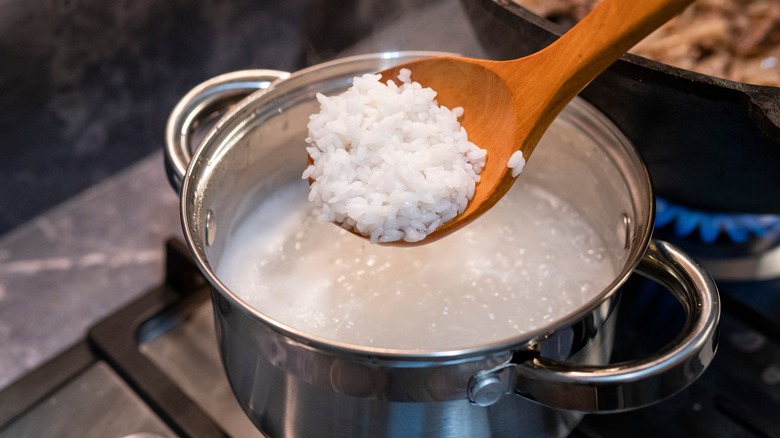The 1-2-3 Rice Rule: What Is It, And Does It Work?
Cooking rice should be simple — but, somehow, it's one of the easiest things to get wrong in the kitchen. Too much water and you end up with a pot of gluey, overcooked rice. Too little cooking time and you have half-done grains. And then there's the guessing game of quantity: You start with a small handful and end up with enough rice to feed a family reunion. Enter the 1-2-3 rice rule, which is an approximate formula that promises to solve all these problems in one go.
The rule is simple: 1 cup of rice cooked in 2 cups of water yields roughly 3 cups of cooked rice. There are, however, two key things to keep in mind. First, the 1-2-3 rice rule is best suited for stovetop cooking. Second, it's not a hard-and-fast rule, and more of a general guideline. The ideal ratio will vary depending on the variety and quality of the rice (there are 15 different types of rice), as well as your personal preference for texture, such as fluffy or firm.
How to make perfectly cooked rice with the 1-2-3 rule
The first step in cooking rice is rinsing. This helps remove excess surface starch, which can otherwise make the rice gummy or overly sticky. The more thoroughly you rinse, the fluffier your rice will be. After rinsing, add 2 cups of water for every cup of rice and bring it to a boil. Then, reduce the heat and let it simmer gently for 15–20 minutes before turning off the flame. One big mistake people make while cooking rice is stirring it, as that could break up the whole grains and affect both the quality and cooking time of the rice.
The 1-2-3 rule works best with some of the most commonly used rice varieties, such as white rice, brown rice, or jasmine rice. Two popular varieties of rice that don't fit this rule are basmati, used in a lot of Indian cooking, and arborio, the grain most famously used in risotto. One cup of basmati only needs 1.5 cups of water to cook, while for arborio, you need to follow a 1:3 grain-to-water ratio.
While stovetop cooking gives you more control in terms of the final texture (just keep tasting as it cooks), you might want to invest in a rice cooker if convenience is what you're looking for. Alternatively, you could learn how to cook rice perfectly in your microwave oven.

